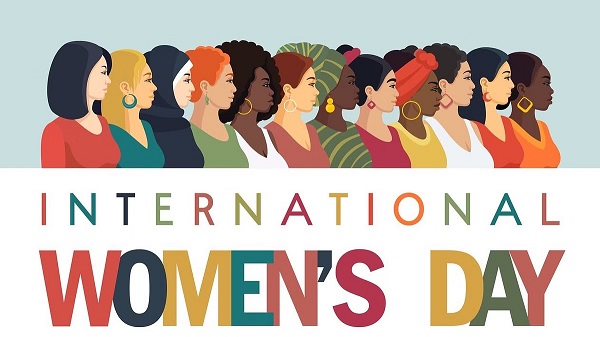
Moving from politics of presence to gender transformation
Yesterday, March 8, 2024, was International Women’s Day. It was a good day to ask; what kind of inclusion did institutions inspire? Were women included to conform to existing gendered power structures that legitimised policies that went against the interest of their groups, or were they included to reform gendered power structures.
Advertisement
Over the years, efforts had been made to include women in leadership and decision-making across different fields of endeavours, including medicine, science and technology, politics etc.
This had been made possible because gender equality was emphasised as a development imperative in every global goal, for example, the Millennium Development Goal (MDG) Three emphasised gender equality and empowerment of women, and the Sustainable Development Goal (SDG) Five also spotlighted gender equality as integral to all dimensions of inclusive and sustainable development.
Proportionate representation
While making gender equality a development imperative that had forced us to think about inclusion in terms of more proportionate representation along axes such as gender, and to challenge the underrepresentation of women in all spheres of institutional structures, normative concerns, and other institutional processes, the focus had been on quantitative inclusion (descriptive) rather than qualitative inclusion (substantive).
We recognise progress for example, actions and inclusions that emphasised gender quotas. Institutions had also created equality and diversity monitoring forms as part of job applications and other recruitment processes to ensure the inclusion of minority groups. Sometimes, leaders were encouraged to adopt other affirmative actions in the appointment of people into political positions.
For instance, head of states or governments were encouraged to use their prerogative powers to appoint more women into cabinet and other ministerial positions.
Progress had been made on several scores, with some countries ahead of others, and some institutions faring obviously better than others.
For example, the University of Ghana, Legon is an institution that had almost achieved gender parity in enrolment with 51.3 per cent men to 48.7 per cent women, an increase from 15 per cent
women in 1971, and with “an all- female top-tier administrators: Chancellor, Chair of Governing Council, Vice Chancellor, Registrar, Director of Finance, Director of Internal Audit, Dean of Students, Director of Public Affairs” (Yankah, 2023).
The University of Ghana’s gender inclusion progress was the exception rather than the norm as compared to other universities in Africa.
Politics of presence
Whilst the progress made was profoundly revealing in different spheres, selective inclusion existed where women were included not necessarily to reform structures but to ensure descriptive representation.
Lemi (2022) posits that descriptive representation occurs where representatives’ demographic characteristics mirror the population from which they were drawn. This had been described as “the politics of presence” (Phillips, 1998).
Whilst descriptive representation was meant to ensure that the included was typical of the population (Lovenduski and Norris, 2003), leading to the promotion of policies with equitable outcomes for minority groups (Arnesen and Peters, 2018), the quality of policies regarding women and other minority groups with less institutional and political power were rarely improved by such inclusion.
To mitigate this, Phillips advocated considering both politics of presence and politics of ideas in inclusion or representation practices (Phillips, 1998).
Without this, their inclusion could legitimise decision making processes and confer institutional trust and acceptance for policies that recomposed unequal gender structures.
Inclusive policies
So, I ask, what level of inclusion was appropriate? Was it quantitative or qualitative inclusion? Inclusion policies that targeted quantitative equality in numbers could ensure women’s numerical presence in decision-making spaces.
Nevertheless, an emphasis on this type of inclusion did not reform structures in and of themselves. It could renew subordination or even engender exclusion from power without a commensurate effort to ensure qualitative inclusion.
For example, when a woman was appointed based on descriptive representation but became a spokesperson for policies, traditions and institutional practices that engendered different but unequal outcomes for men and women or further subordinate women, their inclusion did not yield qualitative outcomes or reformation for their group.
Qualitative inclusion meant consciously extending the boundaries of decision-making spaces such as politics and other high levels of institutional hierarchical spaces to accept and affirm women and value their expertise, perspectives and services. It also meant making room for grace when the included (women) err.
In context where the inclusion of women led to new forms of subordination, discussions about substantive inclusion faded into the background. The inclusion of women did not lead to the legitimisation of their power to transform and improve on the status of other women in such context. Their visibility was encouraged mostly to defend problematic policies that impacted women unfairly.
Their quantitative presence or equal presence rather than qualitative presence legitimised decisions that went against women's interests (Clayton, O'Brien & Piscopo, 2019, p. 113).
Beyond promises
In celebrating Women’s Day yesterday, March 8, 2024, we asked, what kind of inclusion were we inspiring? Was it the inclusion that conformed to existing gender structures or inclusion that reformed.
We urge all actors and institutions to move beyond promises of inclusion that targeted only quantitative inclusion to actions that inspired qualitative and reformative inclusions. When Institutions took measures to inspire inclusion (both quantitative- descriptive inclusion and qualitative- substantive or transformative inclusion) of women, gendered power structures would be reformed.
The included women could act for the minority group they shared characteristics with (gender) rather than conformed to existing structures that subordinated their groups. In this framing, the real possibility of meaningful inclusion was underscored.
The writer is PhD student of the University of Oxford, UK
The writer’s Email: [email protected]




